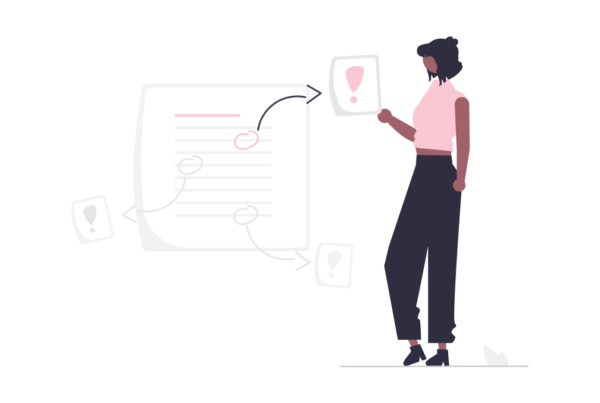Managing learners’ questions in the corporate classroom isn’t always as easy as it sounds. There are a variety of factors that could impact your ability to respond in an appropriate manner. You may genuinely not know the answer to a question being asked, which can put you in an uncomfortable position. You might get questions about something completely off-topic, which knocks you off course, and you struggle to get back on. You might even have an observer in the room disrupting your classroom presentation. It happens to the best of us from time to time. 😅📚🤔
So let’s taco bout it. 🌮 Here are some tips and tricks to help you effectively manage learner questions. Keeping you on time, hitting learning objectives, and, (let’s face it), keep you from pulling your hair out. 🕒💡
Setting Expectations for Engaging with Questions
No one seems to talk much about thoughtfully setting expectations with your class about how to engage with questions, but it really is the foundation that you need to come back to over and over when following best practices live, which you’ll realize fully as you read on.
It’s important to explain to the class at the beginning of the course when they should ask questions and how you will handle them. In general, you should be open to questions at any point in the training, but there have been occasions where I won’t take questions to get through a small section of material I know really shouldn’t be interrupted. To set those expectations properly, you should have two things: a persistent agenda and a parking lot. 📋🅿️🖊️
Persistent Agenda
A persistent agenda is an agenda that is visible throughout the entire training. It may be on a whiteboard, it may be on a handout, or it could even be in an email or other digital format. Ideally, it is visible to the class at all times and to you, (unless you have it memorized).
Parking Lot
A parking lot is a place that is visible to everyone and is where questions are stored. The questions that make their way to the parking lot are questions that are unrelated to the topic at hand, asked at the wrong point in time, or maybe too long to answer at that exact moment (among other things). It’s important that the parking lot is visible because it ensures participants that their queries aren’t just being dismissed. Another reason is so no one forgets. It tends to be just as likely that participants forget about the question they asked as you are to answer them. 🅿️🚗🧠
Once you have both of these in your room, you are ready to set expectations. Usually, while you are covering house rules is a good time, while going through the agenda is another solid time. 🏠📜
It’s important to set expectations for when you want the class to ask questions. For instance, you may be open to them anytime, or you might want them to hold questions for the first section, and then they can ask them at any time during the rest of the training. You also want to set expectations on whether you wish hands raised or not or if you may just remind them to be thoughtful and not to talk over others. You’ll want to point out the parking lot and explain how you’ll use it. You’ll also want to point out that some questions will be answered later as we move through the agenda, and those questions may not always make it to the parking lot.
When you put it all together, it might sound something like:
“I welcome you to ask questions anytime throughout the presentation, and please be thoughtful of others so we don’t talk over them. There may be some questions that we will need to table for later, so they will either end up on the parking lot here, or I’ll let you know when they will be answered later in the agenda.”
That’s it! A couple of sentences that take less than a minute to spit out and get everyone on the same page. 📝✅⏱️
Follow Your Own Rules
🔍 It sounds easier than it is, but you need to follow your own rules. It is all too enticing sometimes to show off your depth of knowledge by diving deep into an off-topic subject or jump ahead in the content by inadvertently answering a question that is two steps ahead. You have to hold fast and be constantly aware of where you are at in the content and what comes next. This will enable you to use the parking lot properly and reassure people when content will be covered later in the agenda. When you do the latter, be specific about when the question will be answered on the agenda and point to it on the wall. See why having an agenda posted can be helpful? 📋
Positive Reinforcement
🌟 Great instructor-led training is engaging. The best instructor-led training is conversational (not lectures) when not participating in activities. The foundation of any good conversation is a good question, so when you get those good questions, simply call it out. “Hey, Mr. Engle, that was a great question; thank you for asking it.” You’ve probably been told to say “good question” after people ask a question. That’s fine, but adding a “thank you” to that adds so much more. Not only for the participant that asked but it also encourages the rest of the class to ask questions. Something to think about. 💭
Answer Opposite the Question
🔄 This pertains to live instructor-led training only, but it is a great best practice. When someone asks a question, always position yourself on the opposite side of the room when you answer. That way, you both have to “shout” across the entire class to hear one another. This helps with a few things. Number one, while you position yourself on the other side of the room (if you aren’t already there), you can ask the rest of the class, “Did everyone hear that question?”. The question may get restated, or it may not, but you now have everyone’s attention, and you are both speaking across the room to one another. Number two, this means that everyone can hear and everyone is more likely to be engaged. Conversely, if you stand right next to the person who asked the question, many may not hear the question or the answer, and you run the risk of losing control of the classroom. 🗣️
Follow Up
🔄 This should go without saying, but do what you say you are going to do and follow up. If you get asked a question that you can not answer during the session and you commit to finding an answer, make sure that you do. Interestingly, you will likely lose less credibility by not following up than you build with following up.
Early in my training career, a trainee named Chris asked a question in a multi-day onboarding class that I did not know the answer to on the spot. I told him I wasn’t sure, but give me a day, and I will follow up with him and the rest of the class tomorrow. I found the answer and closed the gap with everyone when we were kicking off training the following day. To my surprise, he was blown away. In front of the entire class, he told me that leadership has often made similar commitments to follow up in many companies. 🌟
When you commit to following up, provide a timeframe and stick to it. That’s it. Even if you have to check in within that timeframe to say, “It’s taking longer than I expected, and I will get back to you again tomorrow,” that’s ok. 📅
So there you have it. Some practical tips for managing questions in the classroom. Not an exhaustive list, but certainly some tips that I had to learn the hard way. What are some of your best practices? Comment below or send me a direct message. I’d love to hear from you. 💬




